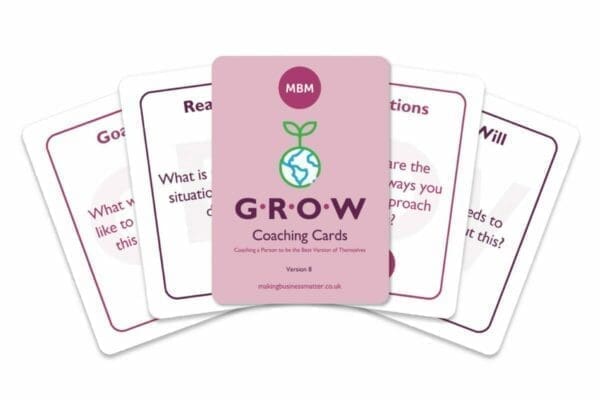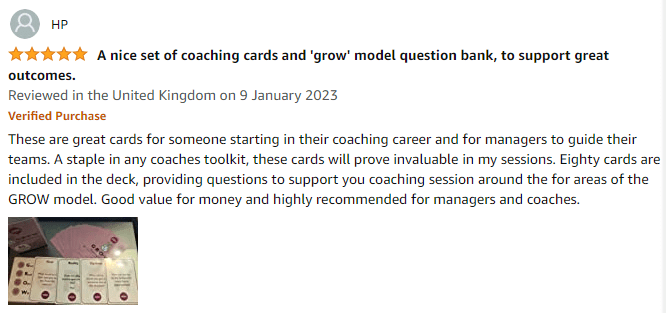Make Your Communication More Effective With Proper Use of the 7 Cs of Communication
I must confess that I really like the 7 Cs of communication. I find that they are very useful traits to practice. They really make your communication more effective when used properly. I have trained the 7 Cs of communication over a number of years. Also, I have used a few different variations. I have personally witnessed the impact they can make when used. The results can be astounding.
In this article, we will look at the 7 Cs of communication. We will look at their explanations. Then, we will see how best to apply them. Also, we will look at what to avoid.
If you are having difficulty communicating effectively, then this is the article for you!
What Are the 7 Cs of Communication?
Any search online shows a variety of combinations of the 7 Cs of communication. Primarily, they are a combination of traits to apply to make your communication more effective. However, there is no wrong or right combination. You need to find the mix that best applies to your communication needs. Here, we will look at my personal favourite 7 Cs of communication. I believe anyone, in any role, can apply them to see impressive improvement.
We will be looking at:
- Clear
- Concise
- Concrete
- Correct
- Complete
- Confident
- Controlled
For each, we will give some best practices as well as potential pitfalls. Hopefully, you can improve your communication skills by applying these traits. In some examples of the 7 Cs of communication, you might find courteous, credible, or coherent. We will incorporate these into some of the 7 we have chosen to focus on.


>> Grow Coaching Cards <<
Why Are the 7 Cs of Communication Important?
There are a number of reasons that the 7 Cs of communication are so important. When we use the 7 Cs of communication, we achieve better results. We see the following happening when they are used properly.
- Better teamwork – we see less conflict due to better explanations and understanding.
- Improved productivity – more gets done when the instructions are clear and easy to follow.
- Reduced mistakes – this is because the communication is open and two-way so there is better clarity.
- Less frustration – the information given is precise and everyone is on the same page.
- Better results – we achieve more because the goals and objectives are properly understood and communicated in an effective way. Also, when they are communicated in a positive way, we are more likely to get the results we are aiming for.
By applying the 7 Cs of communication, we see these and other benefits for the entire team. So, let’s begin.
1) CLEAR

The first of the 7 Cs of communication we will look at is clear. This first important step to effective communication is an essential one that helps all the others work better.
Sticky Learning ® is 7 times more effective than 1-day training courses. Plus, you will get a Chain of Evidence proving your Return on Investment. Discover soft skills training that changes behaviours long term.

What Does It Mean?
Here, we need our communication to be understood by all. Our audience is our main concern. At the end of the day, we need our message to reach the receiver in the way it was meant. Remember, you are not communicating for yourself. You are communicating for the purpose of others. It is important that the words we use are suitable for your target audience.
How Do We Apply It?
For the 7 Cs of communication to work, we need to know how to apply them best. For clear, there are some easy guidelines to follow.
First, make sure your message is clear to you. If you’re not sure what you want to communicate, you will struggle to reach your audience. For verbal communication, say the message out loud to see how it sounds. Also, practice with someone to get their feedback. For written communication, read it out loud to see how the receiver may react. Try simplifying anything that is too difficult to follow.
Next, check that all important points of your message are easy to understand. This might include checking the words you use. Remember, not everyone might have the same educational level or background as you.
Also, be coherent. In other words, have a logical flow to your message. This will create better clarity for your audience. Try not to jump between topics unnecessarily. Instead, stay on one point before moving to the next. However, if there is a link between topics, make sure that is clear too.
What to Avoid
Another element of the 7 Cs of Communication is knowing what to avoid. This will help make our communication more effective. So, we need to avoid a few common mistakes that are made.
First, ensure you don’t communicate too many topics at one time. This can lead to the different topics becoming mixed up. Your audience will struggle to follow your meaning. And, this can lead to confusion.
Next, avoid using an example that doesn’t suit your audience. This can be for both verbal and written communication. Communication should not be about showing off just what you know. Instead, it should focus on creating understanding. That can mean that you need to adapt your communication style accordingly. Giving examples can be a great way to share your experience. However, make sure they link to the topic at hand.
Also, avoid using technical terms, jargon or abbreviations that your audience is unfamiliar with. This can greatly hamper the clarity of your message. Know your audience and adjust your wording accordingly.
Remember, we need our communication to be clear for proper understanding.
2) CONCISE

Our second trait for the 7 Cs of Communication is CONCISE. Let’s see what this element means and how it works to make communication more effective.
What Does It Mean?
When we mention concise, we mean sticking to the point. Also, we mean keeping our message brief. Think of the last time you received a long-winded email. Or, consider the last time you asked a simple question and received an extensive answer that went on and on. How did it make you feel receiving that type of communication? The email probably got skipped. And, the story probably frustrated you with its unnecessary complexity.
From my time in hospitality, I know from personal experience how much time is lost because this trait is missed. You might have an extended story from your guest about their complaint. They want to give every point in great detail. However, this often includes unnecessary information. Also, you have the staff trying to explain a simple issue with an epic drama of what occurred. It can be very testing. And, it can waste valuable time. Instead, you could be solving these problems if the concise version was given.
Keeping these examples in mind, we must ensure our communication is concise. However, this doesn’t mean skipping important points to save time. Instead, it means staying on track. That way your message will be better understood.
How Do We Apply It?
There are a number of best practices we can apply for this 7 Cs of Communication trait.
For verbal communication:
- Have a plan of what you want to say.
- Have possible answers ready for potential questions.
- Take one topic at a time.
- Have a time frame for the communication to happen. This avoids the topic from going off track.
For written communication:
- Use bullet points.
- Make each topic clear in separate paragraphs.
- Send separate emails and messages addressing individual topics.
What to Avoid
So, to make our communication more effective, what should we avoid about concise communication?
First, stay away from over-communicating. This means staying on topic and not straying off topic.
Next, avoid feeling that you need to add unnecessary information. You are not trying to prove how knowledgeable you are. Actually, you will make a better impression by being direct.
Also, avoid beating around the bush. Instead, get straight to the point. This will save time as well as possible gaps in our communication.
3) CONCRETE

The third of our 7 Cs of communication is concrete. Let’s see why this trait helps to make our communication more effective.
What Does It Mean?
When you think of concrete, you think of something sturdy. It is reliable and strong. In terms of the 7 Cs of communication, concrete means that the information is solid. We base our communication on facts and data. So, we avoid speculation. Instead, we use evidence and reliable sources when sharing information.
How Do We Apply It?
Here, we need to apply a number of practices to get this element right.
As a quality manager in previous roles, I know that data means everything. Therefore, ensure that when you communicate you have checked your facts. This will bring more credibility to your information.
Also, add examples to further strengthen your argument. This way, you are showing more concrete information about what you are communicating.
What to Avoid
There are a number of pitfalls we can avoid, such as:
- Avoid listening to rumours and gossip.
- Don’t share information that doesn’t come from a reliable source.
- Stay away from hearsay.
- Avoid forcing your personal opinions on others when they are not fact-based.
Remember, concrete information makes your message more believable. Create a level of trust with others by using this trait.
4) CORRECT

For me, this is one of the most important of the 7 Cs of communication. I have a reason for saying that. Working in hospitality, a customer-based industry, having the correct information to share is vital.
What Does It Mean?
When we talk about correct information, we are giving the details we know to be true. So, keep up to date with your information. The worst trap we fall into is guesswork because it often just isn’t correct. At least, not fully. Some of the information may be correct. However, by simply guessing, we run the risk of giving incorrect details along the way.
How Do We Apply It?
First, do your homework. Don’t share information that you’re not 100% sure about. Check all relevant details. And, double check, especially for reports and customer information.
Next, concentrate on accurate, precise details. This will help keep your information reliable. You will be most trusted by your audience when they know the information you are supplying can be counted on.
Then, use reliable sources of information. Online searches can be great. Also, information from others can be an easy source. However, be sure that all sources you use are appropriate.
What to Avoid
We need to ensure that we are avoiding the following traps that can easily happen.
- Avoid guessing – when you don’t know something, check before communicating.
- Stay away from making things up that just sound convincing.
- Don’t believe everything you hear – check.
- Avoid sharing old information – it can mean you are sharing incorrect details.
So, as we can see, checking is an important part of sharing correct information. Communicate what you are sure about. When in doubt, check first. Then, you can be reassured that your information is correct.
5) COMPLETE

Another of the 7 Cs of communication that I have faced issues with. What we see happening is that gaps appear in the information being shared. Personally, I have experienced this lead to conflict, mistrust, and team division. These all harm the overall performance of everyone involved.
What Does It Mean?
So, what we mean here is giving people all of the information they need to do their jobs correctly. Imagine, you have 10 pieces of data. Your team needs 70% of that information. But, you give only 45%. How can you expect them to perform effectively and achieve the expected results?
An example I can share is about a guest in our hotel celebrating a special birthday. It was her 50th and she had her family and friends, 20 people in total, attending. The information shared with the kitchen and serving staff was incomplete. They hadn’t been informed that the numbers had increased from 12 to 20. Also, they were not given information on the significance of the celebration. Instead, they were simply told it was a small family birthday.
As a result, there were insufficient refreshments for everyone. Also, the decoration didn’t reflect the importance of the occasion. I don’t know about you, but when I reach 50 I plan to celebrate in style! Now, imagine the feeling of the guest when she arrived at the venue and saw the set-up. As you can gather, she was not impressed. And, significant compensation needed to be given in return for ruining her special occasion. This all could have been avoided by having complete information.
How Do We Apply It?
So, what do we need to do to ensure we are sharing complete information?
First, keep your information current. We saw this element in the previous section on correct. Well, it’s also relevant here. The information updates must be shared with everyone who needs them. And, this needs to be done in a timely manner to avoid confusion or disappointment.
Next, know who needs what information. Often, we share information with everyone just in case. Other times, we don’t share the information with those who really need it. Be sure you know your target audience. Then, share the relevant details accordingly.
What to Avoid
Now, let’s look at what to avoid to get these 7 Cs of communication traits working better.
- Don’t waste time – communicate important updates as soon as possible.
- Avoid trying to remember everything mentally – take notes and refer back to them.
- Stay away from hiding information – have transparency and build trust.
- Avoid sharing only positive information – we learn more from mistakes and failures.
Here, an example I can give is about a couple who stayed at our hotel for a week before their wedding. They seemed to be having a great time. This was based on the daily feedback reports we were receiving. After they departed, we received an email from their booking contact. Unfortunately, this told a very different story from the feedback we had been getting. Actually, they had many issues during their stay that we were unaware of. The team member hid this for fear of getting into trouble for making mistakes.
For communication to be effective, this type of practice just can’t happen. As leaders, ensure there is an environment where people feel safe to share their mistakes as well as their successes. Fear cannot govern. Otherwise, you will face problems getting the complete information from your team.
Instead, create a system that encourages honesty. Support those who own their mistakes and are ready to fix them. Also, avoid leading through fear. Otherwise, your communication will always be incomplete.
6) CONFIDENT

I chose to add this to the 7 Cs of communication due to the importance it plays in making your delivery effective. I have seen important messages miss the mark due to a lack of confidence. This can be in public speaking as well as written communication. Let’s have a look.
What Does It Mean?
In terms of communication, we need to be confident about what we are sharing. Also, we should have self-confidence in the delivery itself. So, we need to be fully confident in the WHAT and the HOW.
What we communicate – link it back to previous traits such as correct and concrete. These both mentioned having the right information to share. So, you have done your checks and are sure about the details. Now, you can be confident about what you communicating. That will help your audience trust what you are sharing. Also, it will build up your credibility with your team.
How we communicate – imagine being at a meeting. The person presenting is stammering and can barely be heard in the room. Also, when asked questions, they really can’t give proper answers. How do you feel about the delivery? Would you find the information reliable? Probably not. Doubts might enter your mind about the reliability of the person and their message.
How Do We Apply It?
So, we need to ensure that confidence covers all areas of what and how we communicate. Again, this can be verbal or written communication styles.
We suggest the following tips for making sure that you show confidence when communicating.
- Check your details – a reminder to do your homework and provide reliable information.
- Prepare – plan in advance what you want to communicate to get better results.
- Share what you know from experience – it will put you more at ease.
- Be assertive in your approach – show your self-confidence in what you are sharing.
For verbal communication, think about the following suggestions.
- Practice, practice, practice – it will build up your confidence for speaking in front of others.
- Use changes in your tone to make it sound more interesting to your audience.
- Select terms the audience will understand to avoid blank looks.
For written communication, here are some points to consider.
- Write a draft before sharing.
- Check and double-check.
- Use tools such as spelling and grammar checks to make the information more trustworthy.
What to Avoid
First, don’t mix your message by saying one thing and then doing another. Be aware of your body language. Ensure that your actions don’t contradict the message you’re sharing.
Also, avoid moving from assertive to aggressive in your delivery. This will turn your audience off from listening to or reading your message.
Then, stay away from focusing only on mistakes and negative messages. This can easily turn your audience off. Instead, show your confidence that these mistakes can be resolved. And, communicate more about what these actions would be.
7) CONTROLLED

Here we are at the final trait of the 7 Cs of communication. Here, we will look at 2 specific aspects of control in terms of making our communication more effective.
What Does It Mean?
When talking about a controlled approach to communicating, we are focusing on emotional control and content control.
1- Emotional Control
It is important that when we communicate our emotions are in check. Avoid communicating when your emotions are overcharged. In most cases, emotional responses simply add fuel to the fire. Instead, we need to ensure that, regardless of the situation, our emotions are always under control. This will ensure that our communication is shared in a more effective way.
2- Content Control
You don’t need to share everything with everyone. Instead, you need to properly understand who needs what information. This is true for your team as well as your customers.
As an example, in one of the hotels I worked in, one of the staff decided to overshare. They thought being honest with the guest about an issue with the room was the best course of action. Unfortunately, it backfired. The guest used this information to demand a full refund for their stay for the inconvenience they had faced.
At times, it is important to control what content and how much you are sharing. This doesn’t mean that we are hiding important information. Instead, it means that we understand the proper channels of communication. Also, we know that some information needs to remain confidential or restricted.
How Do We Apply It?
For proper control in communication, we need to consider the following:
- Self-awareness – we need to know how emotional we are. Also, we need to know how that will affect our communication style. Then, consider how your approach will affect those around you.
- Target audience – consider who really needs the information. Ensure that only those allowed to have the knowledge are included.
- Courtesy – at all times we need to apply courteous practices to our communication. No matter the situation, manners need to be used.
What to Avoid
The easiest pitfall we can fall into for this trait is being overly sympathetic. A customer may become emotional about a situation. However, that does not mean you start to mirror all of their emotional responses. Anger just breeds more anger. As a professional, you must maintain an element of emotional control when interacting with others.
Also, it’s easy in a tense situation to start blaming others. Control this reaction. It doesn’t benefit anyone. The customer sees a divided team and your colleagues will resent you for naming names. Therefore, use your effort and time to solve the problem instead.
Then, avoid replying in anger or frustration. Before you say or send something when you’re emotional, take a step back. That can prevent you from regretting later something you said, verbally or in writing, that you wish you hadn’t. Step back from the situation. Clear your head. Take some deep breaths. I always recommend that you get a second opinion from someone you trust about whether you should say or send something that may come back to haunt you.
Finally, it’s easy to get carried away by sharing information with close colleagues. Resist this urge. Instead, know what you can and cannot share. You may be in a position to have access to sensitive or confidential information. Respect that. Instead, discuss any concerns with those already in the know.
Concluding the 7 Cs of Communication
And there you have it. The 7 Cs of communication that you can start applying straight away. If you are using some of these already, great. Keep going. And, never stop enhancing the skills and traits that you have.
For those traits that are new or different, good luck. Take it one step at a time and keep trying. You will appreciate the effort when you see the improvement in your communication skills.
If you haven’t already, subscribe to our Youtube channel.




